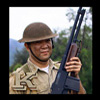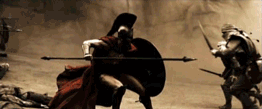Post by kalashnikov on May 20, 2008 13:36:39 GMT 8
Some intel sharing about an article on the Philippine Daily Inquirer on airsoft. I like the closing statement that airsoft guns should be regulated to 550 fps.
Turning toy guns into mean 'war' machines
By Delfin Mallari Jr.
Southern Luzon Bureau
First Posted 19:17:00 05/18/2008
LUCENA CITY, Philippines--Gerald Caliwara's passion for his chosen sport has brought him into a kind of job he now enjoys--gunsmith of airsoft firearms.
For Caliwara, 40, resident gunsmith of Getaway Airsoft Group (GAG), a bunch of toy gun owners based in Lucena City, regular maintenance of their firearms is a must for all enthusiasts to fully enjoy the excitement of a simulated war game.
"I can fix all models of airsoft guns and turn them into competitive weapons. There are several models and modified versions in the market but all their parts have the same principles," he says.
His satisfied clients have attested to his skill and ingenuity on airsoft firearm.
"He is good. I can fix any trouble of my service firearm anytime but not with my airsoft rifle. With him around, my 'baby' is always in fighting condition," says PO1 Geronimo Polintan, a member of a group of local policemen that is into airsoft war games not only as a sport but also as a practice for tactical maneuvers.
Airsoft weapons are exact replicas of high-powered firearms which use 6-mm plastic BB (ball bearings), each weighing 0.2 gram, for their projectiles.
These toys have been classified by the Philippine National Police as special types of air guns.
Airsoft guns have three basic types: spring, electric and gas-powered.
The airsoft gun craze started in Japan in the mid-'70s when people were prohibited by the state from owning guns.
To give one a feel of firing a real gun, Japanese manufacturers designed and created replicas for use in simulated battles.
Tinkering with his own airsoft assault rifle triggered his interest in seriously studying the craft, says Caliwara.
"All war game buffs should maintain their guns in good condition. Avoid dropping them because they're not real guns. Lubricate gun parts regularly to maintain them in good condition so that you can always enjoy the game," says Caliwara, also called "Trooper" by the local airsoft community.
Caliwara, a college graduate who was formerly connected with a construction firm, recalls that his penchant for tinkering his own airsoft assault rifle had triggered his interest in seriously studying the craft.
He started his airsoft gunsmith profession in 2000 after he finished a two-month seminar sponsored by Phil Airsoft, then the leading distributor of high-end airsoft guns in the country.
Caliwara's gunsmith shop is located in one corner of the GAG headquarters in Barangay I in the northern part of the city.
The gunsmith charges his client P500 for basic modification jobs mostly on newly purchased guns to add more firepower to the weapon.
During the initial years of local airsoft war games way back in early 2000, Caliwara says he normally charged P1,000 to P1,7000 for basic modification jobs on high-end guns.
"But now, some airsoft gun owners are the ones doing the modification and repair jobs," he says with a chuckle.
According to Caliwara, prices of original Japanese-made airsoft guns ranged from P15,000 to P20,000 per unit.
"Once the owner starts modifying the parts to add more firepower, he will have to spend approximately the same amount," he adds.
He says China-made guns are much cheaper with the prices ranging from P5,000 to P9,000 per unit but upgrading the gun parts will cost a few thousand pesos more.
He advised airsoft gun enthusiasts to maintain the velocity of the pellets from 450 up to 500 feet per second (FPS) only.
"If the gun is too powerful, it will be extremely painful for their opponent, especially if the weapon is fired at 10 feet or nearer. The player will be creating enemies instead of gaining friends. The main goal of establishing camaraderie among all airsoft players will be defeated," Caliwara says philosophically.
Contrary to popular belief, he says, airsoft guns can not be converted into real ones.
"They may have the same looks. But in their parts and functions, there's a big difference," the gunsmith explains.
He also advises airsoft gun buffs to have two sets of firearms: a powerful one for open field war game and another one for closed quarter combat.
With the advent of more war game enthusiasts, the prospect of more modification jobs awaits Caliwara.
"But this is no permanent profession. I'm only here because war game using airsoft guns is now the fad. I love the job. Transforming airsoft guns into mean war machines gives me pleasure," he explains.
With the introduction of new and much cheaper Chinese-made airsoft guns in the market, the gamers quickly mushroomed nationwide, forcing police authorities to implement rules and regulations in ownership and transport.
For one, the velocity of plastic pellets should not exceed 550 feet per second.
Copyright 2008 Southern Luzon Bureau. All rights reserved. This material may not be published, broadcast, rewritten or redistributed.
Turning toy guns into mean 'war' machines
By Delfin Mallari Jr.
Southern Luzon Bureau
First Posted 19:17:00 05/18/2008
LUCENA CITY, Philippines--Gerald Caliwara's passion for his chosen sport has brought him into a kind of job he now enjoys--gunsmith of airsoft firearms.
For Caliwara, 40, resident gunsmith of Getaway Airsoft Group (GAG), a bunch of toy gun owners based in Lucena City, regular maintenance of their firearms is a must for all enthusiasts to fully enjoy the excitement of a simulated war game.
"I can fix all models of airsoft guns and turn them into competitive weapons. There are several models and modified versions in the market but all their parts have the same principles," he says.
His satisfied clients have attested to his skill and ingenuity on airsoft firearm.
"He is good. I can fix any trouble of my service firearm anytime but not with my airsoft rifle. With him around, my 'baby' is always in fighting condition," says PO1 Geronimo Polintan, a member of a group of local policemen that is into airsoft war games not only as a sport but also as a practice for tactical maneuvers.
Airsoft weapons are exact replicas of high-powered firearms which use 6-mm plastic BB (ball bearings), each weighing 0.2 gram, for their projectiles.
These toys have been classified by the Philippine National Police as special types of air guns.
Airsoft guns have three basic types: spring, electric and gas-powered.
The airsoft gun craze started in Japan in the mid-'70s when people were prohibited by the state from owning guns.
To give one a feel of firing a real gun, Japanese manufacturers designed and created replicas for use in simulated battles.
Tinkering with his own airsoft assault rifle triggered his interest in seriously studying the craft, says Caliwara.
"All war game buffs should maintain their guns in good condition. Avoid dropping them because they're not real guns. Lubricate gun parts regularly to maintain them in good condition so that you can always enjoy the game," says Caliwara, also called "Trooper" by the local airsoft community.
Caliwara, a college graduate who was formerly connected with a construction firm, recalls that his penchant for tinkering his own airsoft assault rifle had triggered his interest in seriously studying the craft.
He started his airsoft gunsmith profession in 2000 after he finished a two-month seminar sponsored by Phil Airsoft, then the leading distributor of high-end airsoft guns in the country.
Caliwara's gunsmith shop is located in one corner of the GAG headquarters in Barangay I in the northern part of the city.
The gunsmith charges his client P500 for basic modification jobs mostly on newly purchased guns to add more firepower to the weapon.
During the initial years of local airsoft war games way back in early 2000, Caliwara says he normally charged P1,000 to P1,7000 for basic modification jobs on high-end guns.
"But now, some airsoft gun owners are the ones doing the modification and repair jobs," he says with a chuckle.
According to Caliwara, prices of original Japanese-made airsoft guns ranged from P15,000 to P20,000 per unit.
"Once the owner starts modifying the parts to add more firepower, he will have to spend approximately the same amount," he adds.
He says China-made guns are much cheaper with the prices ranging from P5,000 to P9,000 per unit but upgrading the gun parts will cost a few thousand pesos more.
He advised airsoft gun enthusiasts to maintain the velocity of the pellets from 450 up to 500 feet per second (FPS) only.
"If the gun is too powerful, it will be extremely painful for their opponent, especially if the weapon is fired at 10 feet or nearer. The player will be creating enemies instead of gaining friends. The main goal of establishing camaraderie among all airsoft players will be defeated," Caliwara says philosophically.
Contrary to popular belief, he says, airsoft guns can not be converted into real ones.
"They may have the same looks. But in their parts and functions, there's a big difference," the gunsmith explains.
He also advises airsoft gun buffs to have two sets of firearms: a powerful one for open field war game and another one for closed quarter combat.
With the advent of more war game enthusiasts, the prospect of more modification jobs awaits Caliwara.
"But this is no permanent profession. I'm only here because war game using airsoft guns is now the fad. I love the job. Transforming airsoft guns into mean war machines gives me pleasure," he explains.
With the introduction of new and much cheaper Chinese-made airsoft guns in the market, the gamers quickly mushroomed nationwide, forcing police authorities to implement rules and regulations in ownership and transport.
For one, the velocity of plastic pellets should not exceed 550 feet per second.
Copyright 2008 Southern Luzon Bureau. All rights reserved. This material may not be published, broadcast, rewritten or redistributed.








